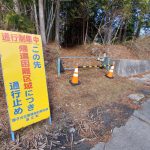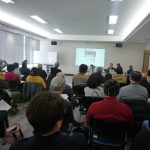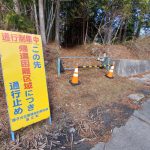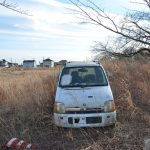13 years have passed since the Great East Japan Earthquake occurred. The local symposium titled “Talk about Namie: Temples and Immigrants” was held in Namie, Fukushima Pref., near the Fukushima Daiichi NPP, in February 2024. The guest speaker, Shinji Omaru, head monk at Shosaiji temple in Namie, unraveled the history and culture of the region from the perspective of the Soma clan during the Edo period, particularly from the perspective of the Jodo Shinshu monks who immigrated to the town.
1.From the “Shinshu Kingdom” of Hokuriku to Soma’ ~Hunger, and the Search for the Power to Live
Almost 240 years ago, Tenmei famine caused severe starvation to this area, then decreased population heavily. This triggered the clan to start an immigration policy and many immigrants came from Hokuriku, which had a surplus population of less than a second son or daughter. Many of them were followers of the Jodo Shinshu sect, which forbids abortion. Shinshu temples were not main religious institutions but became living centers for the immigrants who were given generous preferential treatment and played an important role in the formation of local communities.
In Japan, one of the famous nursery rhymes begins with, “The deities in shrine who save the local” is known. It means, we have to ask if we want to cultivate the farm or do something as local deities exist everywhere. However, Shinshu does not worship them, so it is difficult for them to enter into the local community. They thus brought the teachings, customs, and lifestyle of the Jodo Shinshu to Namie, causing friction not only with Shintoism but with other established sects such as the Soto and Shingon sects, but bringing about great changes in the local community. It’s not easy that immigrants who faced the harsh natural environment and worked hard to cultivate land in an unfamiliar place, with their own doctrines as spiritual support.
2.Changes after the Meiji Era and the Role of Shinshu Temples
We Japanese have old saying, “Kyo-onna ni azuma-otoko” (literally means, women in Kyoto and men in Edo). I don’t know if it was inspired by this saying or not, but there was similar saying in Namie: “Obori Otoko to Kiyohoshi Onna” (“Men in Obori and woman in Kiyohashi”). Men in Obori, where is famous for its pottery, were rough spenders, while women in the Kiyohashi, where is the center of town, were more knowledgeable and thriftier. It means that even in the same town, the characters of the regions are different. As these words suggest, Namie had a background of accepting and co-existing with people from various backgrounds, but since the Meiji period (1868-1912), the movement to abolish Buddhism and changes in local society have caused many temples to lose their economic foundation and face a crisis in their survival. However, many of the remaining Shinshu temples continued to play an important role in the local community. Mr. Omaru described how the temples had become spiritual pillars for local residents through traditional Shinshu events such as Hohonko, memorial services for the founder of the sect.(Continued in the second part)





